
This task provides students practice with flawed reasoning using fraction comparisons.
- Subject:
- Education
- Elementary Education
- Mathematics
- Material Type:
- Activity/Lab
- Assessment
- Homework/Assignment
- Date Added:
- 08/15/2018

This task provides students practice with flawed reasoning using fraction comparisons.
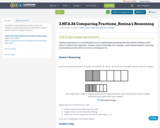
This flawed reasoning task provides practice for students to understand the size of the wholes must be equal in order to compare fractions.
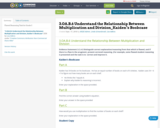
Flawed Reasoning Task for Grade 3
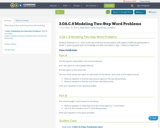
This task provides students practice with modeling.
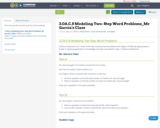
This task provides students practice with modeling.
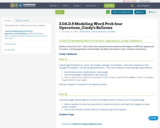
This task provides students with practice modeling.

This chain of reasoning task address 3.OA.8

Unit Objective(s): Expose students to a variety of careers.Answer the question, “How do people find their careers?”Students will have new ideas for career pathways. Note: Teachers and students will need to have a Nepris account.The full lesson plan is attached.
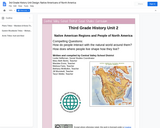
This unit on American Indians: By studying the regions of the United States and the cultures that live in each region, students are able to compare/contrast within regions and across regions how tribes used their environments, and their cultural and other contributions to American life.
Note that the emphasis here is on broader groups of tribes for each region with some instruction on specific tribes representing each region. In no way is this case study approach to learning about one tribe meant to be generalized to all tribes of that region. We understand that each tribe was and continues to be unique in its culture, practices, lifeways, and traditions.
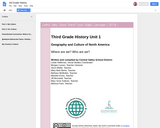
The unit is focused on the examination of geography in terms of “place.” Students dive into inquiry to answer the compelling questions, “Where are we?” and “Who are we?” Through these two questions students will understand where they live and where people around the world live. Students will also dive into the term “culture” and define it through many characteristics. Students will examine and reflect upon their own culture and research different cultures of North America.

This is a short lesson plan for discussing/reviewing order of operations with technology integration.

Looking for a quick tool and resource to help with reading fluency? Check out this fun and easy poem for fluency development.
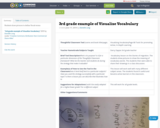
Students draw pictures to define Vocab terms

These are recordings for grades 4-5 for listening comprehension. They were developed by ELPA and correlate with the ELP standards.
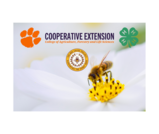
South Carolina 4-H Youth Development is the youth component of Clemson University Cooperative Extension, fulfilling the land-grant mission by taking research-based knowledge and educational resources to the state's youth, ages 5-18 years. One component of an SC 4-H Pollinator Program, the Honey Bee Project is an independent-study project that engages youth in the active role of beekeeping, learning the basics of entomology, and gaining an appreciation for pollinators in our world. - South Carolina 4-H Pollinator Program Honey Bee Project Record Book, 2021
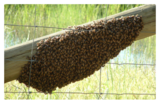
Learn how honey bees manage their community through swarming. This lesson includes learning objectives, material and resource lists, background information, activities, reading selections, writing assignments, a game, assessments, and support documents. See the Educator's Guide for more video links and recommended readings.

Students are reading to learn new information all the time. They should know different strategies to help them along the way. This is a great little lesson to do at the beginning of the school year and then after semester break again. Students should know the tools to help them be successful readers. This can be used for a teacher inservice or for parents who are new to helping thier own kids out during elearning / homework. 20 minutes

Learn how honey is made and used. This lesson includes learning objectives, material and resource lists, background information, activities, reading selections, writing assignments, a game, assessments, and support documents. See the Educator's Guide for more video links and recommended readings.
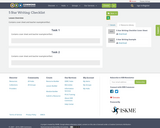
Contains cover sheet and teacher example/artifact.
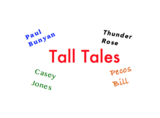
This lesson uses tall tale read alouds to reinforce the common elements, or text structure, of tall tales. As the text is read aloud, students examine the elements of the book that are characteristic of tall tales. Then using what they've learned, they write and perform tall tales of their own.